World Record Holder Sets Out on 475-Mile Wheelchair Trek on the Great American Rail-Trail
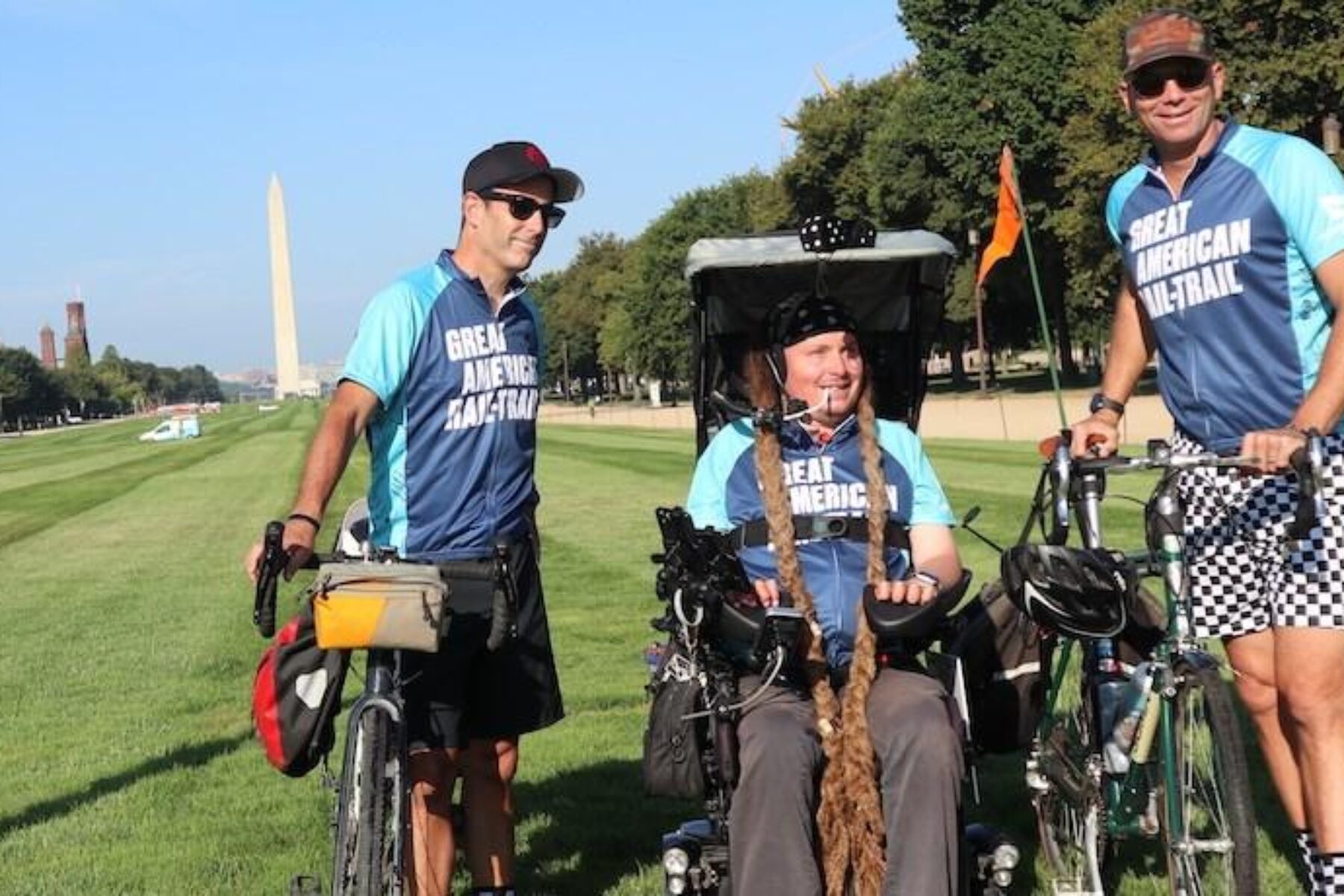
When Rails-to-Trails Conservancy (RTC) first met Ian Mackay in August of 2019, he hadn’t yet broken the Guinness World Record for the longest distance covered in 24 hours in a mouth-controlled power wheelchair—an accomplishment he achieved this past June.
He had, at that time, however, just surpassed 1,000 consecutive days—that’s some 2.7 years’ worth of days in a row—of getting out on a trail, a feat that few die-hard trail users could brag of.
He had wrapped up long-distance trips on multiple western portions of the developing 3,700-mile Great American Rail-Trail®.
And he spoke of the day he might, someday, ride the finished Great American route, which is more than halfway complete and connects Mackay’s home state of Washington and the District of Columbia. “I might need a faster chair,” he said jovially in a 2019 Rails to Trails magazine article.
This week, Mackay made it clear that he’s decided not to wait.
On Wednesday, Sept. 21, flanked by a crowd of well-wishers, Mackay and teammates momentously departed on a 12-day ride along the 475-mile easternmost portion of the Great American Rail-Trail, from D.C. to Columbus, Ohio. This latest trek—a project of Ian’s Ride, which he founded in 2017, the United Spinal Association (USA) and RTC—was designed to raise awareness around the importance of, and need for, more access to the outdoors for people with mobility impairments and other disabilities.
“We are thrilled to cheer on Ian as he sets off along the Great American Rail-Trail,” said Kevin Belanger, RTC’s project manager for the Great American. “We hope it serves as an inspiration for what is possible when we prioritize accessibility in creating and connecting outdoor infrastructure.”
Mackay has relied on a power wheelchair to stay connected to nature and the outdoors since 2008, when a spinal cord injury from a bike crash left him a quadriplegic. After several years of what he calls a dark time in his life, Mackay was able to gain more independence outside with the help of a motorized wheelchair powered by sip-and-puff inputs, and improved voice-recognition technology on his smartphone.
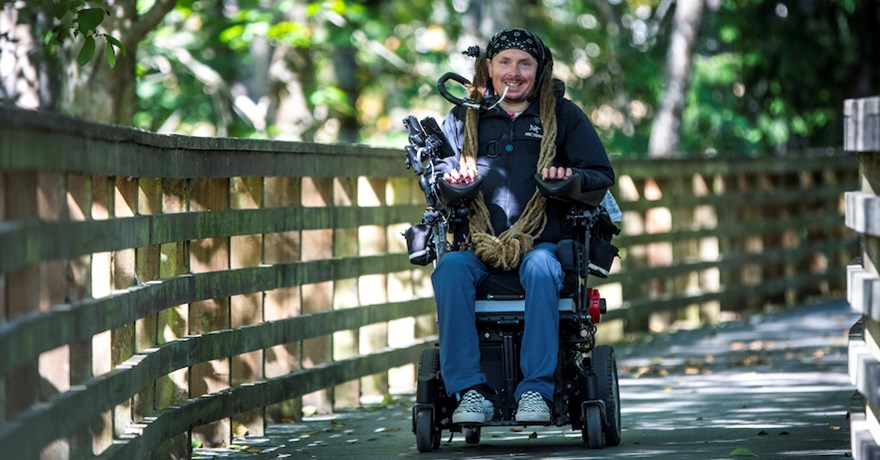
As he said in 2019, the Olympic Discovery Trail—a 90-miles-and-growing rail-trail that runs near his home in Washington—called to him. “The trail is where I found my solace,” affirmed Mackay, who is a field biologist by training and a nature lover.
Eventually putting up to 20 miles a day on the trail—he started seeking new challenges and joked with his mom about riding across the state. “She laughed—but within a few months we ironed out the details and made it happen,” he stated.
Recognizing the need in America to make trails more accessible to all who wish to use them, Mackay has since used his voice, both in Washington State and on Capitol Hill, to advocate for change.
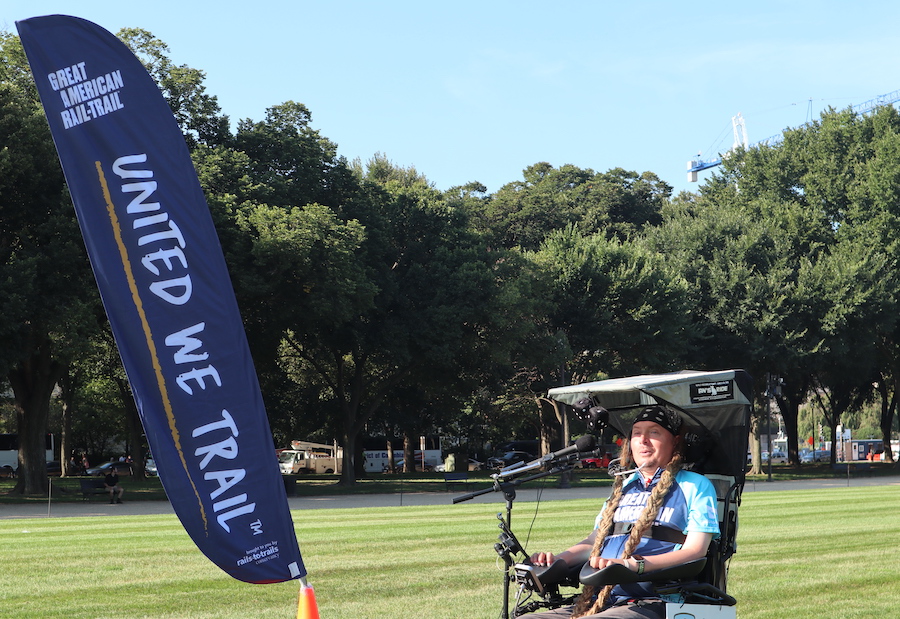
“I found my happy place. I found my passion [on the Olympic Discovery Trail],” he said on Wednesday to a crowd who had gathered at the National Mall to see him off on his 12-day journey. He added, “We’ve really been able to develop community [by bringing other people out on the trail with me]. That’s what trails are. Having infrastructure where we can all meet and do something in a safe and accessible way is spectacular.”
During the launch ceremony, Mackay was joined by fellow speakers, including Kevin Belanger of RTC; Monica Wiley, D.C. Chapter advocacy coordinator for USA; Jeremy Buzzell, national accessibility program team coordinator for the National Park Service; and Juliette Rizzo, an RTC board member, disability advocate and former Ms. Wheelchair America.
“I want to thank Ian … for everything he is doing [to show] what accessibility looks like and how people with disabilities do have the right to have access to the land, access to nature,” said Monica Wiley, who was paralyzed as a child from the waist down and who now walks with a cane.
“It’s important for us to show that we have the right to have access to [everything that] everyone else has the opportunity to do. And to be able to socialize. And to be able to ride,” added Wiley, who is an avid trike rider.
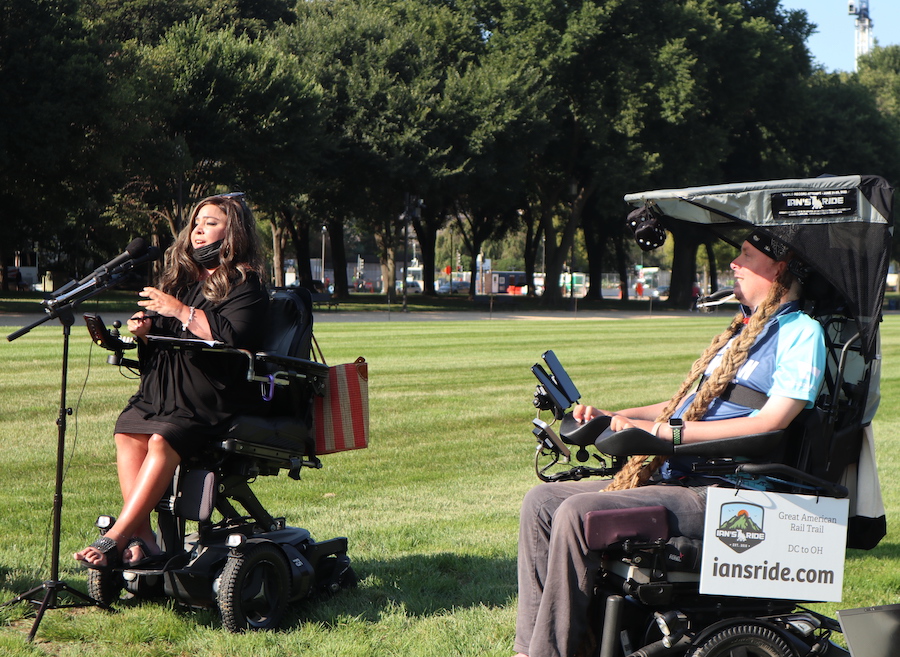
“As a person who is severely immuno-compromised, and could not come out during the pandemic, not even to get groceries, for two years—this is my first day out, Ian, because of you,” proclaimed Juliette Rizzo. “You’re bringing people outside, but you’re also giving them a voice.”
Added Rizzo, “I am a proud member of RTC, and [I’m proud] of all the great things that rail-trails do, and can do, as we form the community that Ian is talking about. Rail-trails are where communities begin.”
Jeremy Buzzell emphasized the importance right now of having a national dialogue on accessibility, mentioning the Biden Administration’s resuscitation of the Federal Interagency Council on Outdoor Recreation and the U.S. Department of Interior’s strategic plan, which specifically calls out the need to increase access to recreation for underserved communities.
“This is the perfect time … to have these conversations. To have Ian set an example for others, and to encourage people to get out,” he said. “The more people with disabilities we have coming to parks and demonstrating their ability to access our wonderful natural places, the more we’re going to respond as an agency.”
Ian’s ride on the Great American Rail-Trail comes as several priorities are being pursued in Congress. RTC is championing funding for the Active Transportation Infrastructure Investment Program, which would provide focused investment for connecting trail and active transportation infrastructure, creating seamless routes for walking, biking and wheelchair use that is separated from vehicle traffic. United Spinal is pushing for legislation to lift Medicare’s “in-the-home” rule, which restricts Medicare coverage of wheelchairs and wheelchair components that are designed to function outside of a person’s home, including outdoor environments.
After the ceremony, Mackay formally started the ride accompanied by his teammates and dozens of supporters who rode alongside him in wheelchairs and on bikes from the National Mall to the C&O Canal Towpath trailhead in Georgetown. Chants of “Let’s go, Ian!” filled the background.
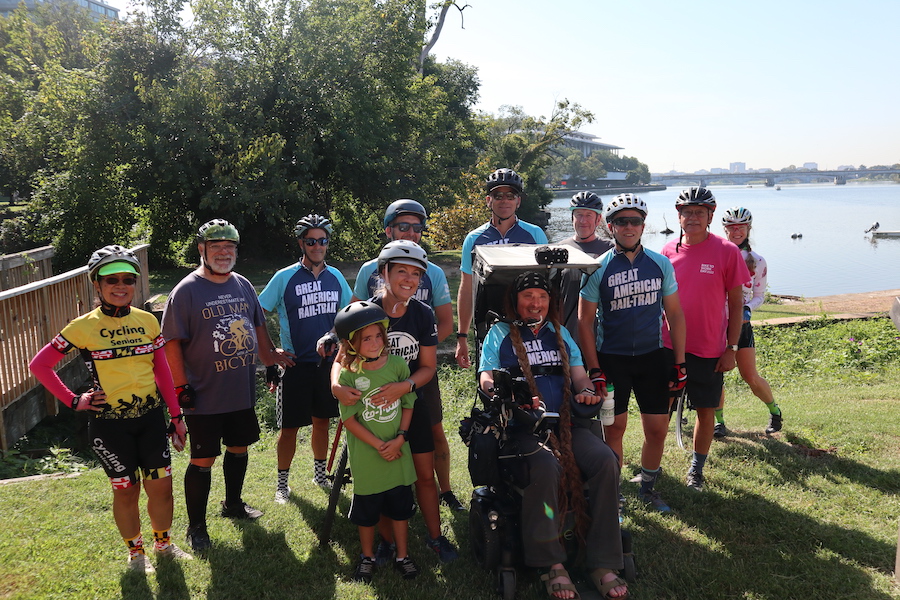
Before his departure in the morning, Mackay also gave an update.
“I’ve continued to ride,” he said. “I haven’t missed a day in almost six years out on the trail, and I’m so excited to get out here.”
Mackay welcomes members of the public and other advocates to join him and the Ian’s Ride team for other segments of the ride. You can follow along and track their progress on their blog.
Related Blogs:
The 3,700-mile developing Great American Rail-Trail® is 55% complete to date. Learn more about this epic cross-country route.

Donate
Everyone deserves access to safe ways to walk, bike, and be active outdoors.